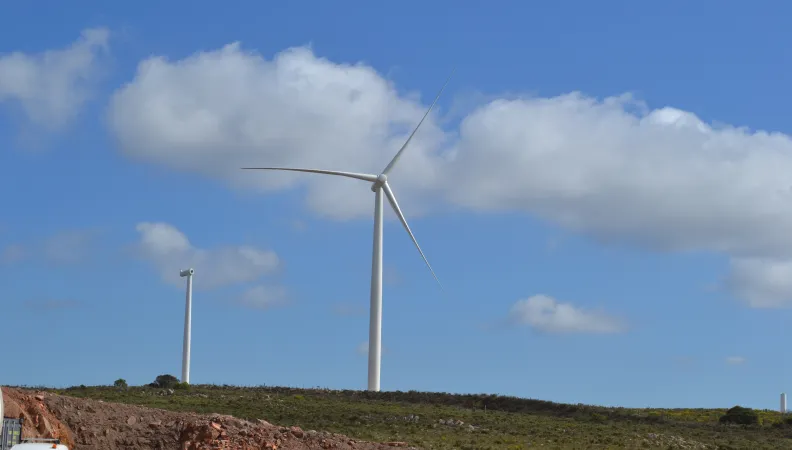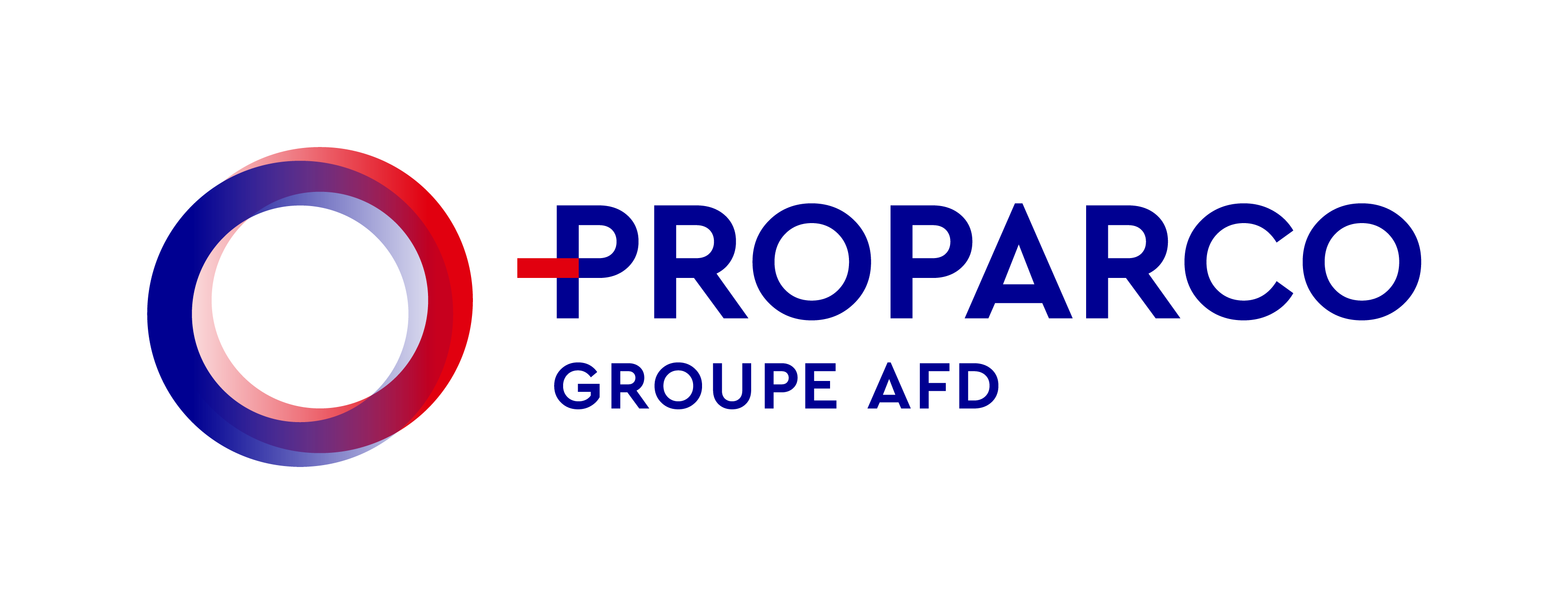Share the page
Developing renewable energies in Africa: a public-private partnership
Published on
- Astrid Jarrousse Project manager, Infrastructure and Mining department Proparco
- Stéphanie Mouen Project manager, Transport and Sustainable Energies department Agence française de développement (AFD)
- Grégor Quiniou Deputy Head, Infrastructure and Mining department Proparco

Private Sector & Development #18 - Independent power producers: a solution for Africa?
This issue explores the benefits and the requirements of increased intervention in electricity production by the private sector. Developing efficient public-private partnerships would seem to be the best solution for confronting the major challenge of sub-Saharan Africa’s energy deficit.
Likewise mobile phone for telecommunication, is sub-Saharan Africa on the verge to leapfrog conventional energy and move straight to renewable energy (RE)1 to address requirements for capacity additions? There is genuine potential for RE in Africa. Private producers can play a key role in expanding this sector. For this to happen, governments need to establish a regulatory framework and planning schedules, in co-operation with lenders and donors especially in the handling of the upstream phase of projects.
Sub-Saharan Africa has an estimated 83 gigawatts (GW) of electricity production capacity, of which 22 GW2 derived from renewable energy sources. Hydroelectricity, with an installed capacity of 21.6 GW, accounts for an estimated 98% of the total, wind power accounts for 120 megawatts (MW), geothermal for 210 MW and solar energy for around 10 MW (mainly not grid-connected). While public contracting authorities have mainly focused on the traditional modes of electricity production (especially thermal energy and large-scale hydropower projects) and some power companies are sometimes reluctant to deal with intermittent energy sources, private developers have a key role to play in developing renewable energy (RE) projects in sub-Saharan Africa. These projects can be swiftly set up and are competitive compared with fossil fuels, which make them attractive over the short term.
The potential for re-based production
The potential for RE in Africa is enormous; the potential for hydroelectricity, for example, is estimated at around 1,844 terawatt hours (TWh), i.e. 18 times the level of the continent's hydroelectric production in 2009. Around half of this potential is judged as economically viable (which means that there is a potential additional capacity of 100 GW to 150 GW). Wind energy resources are also very substantial and exploitable even if they are not distributed evenly across the region: 87% of the high-quality resources are located in the coastal zones of the east and south. These are among the best in the world. The solar resource is abundant in Africa and more evenly distributed across the whole of the continent. Supported by appropriate government policies and by steadily decreasing production costs, solar PV could be playing a very important role in Africa's energy supply by the year 2030, with estimates ranging from 15 GW to 62 GW (EREC/Greenpeace, 2010). Finally, geothermal energy is also promising, with a potential estimated between 7 GW and 15 GW (AU-GRP, 2010) – but this resource remains limited mainly to the Rift Valley countries. Many RE projects are currently under development (see box), mainly by independant producers. Those are responsible for 98 % of solar power plants (64 % excluding South Africa) and in excess of 90 % of wind farms currently under development. Yet these projects are being developed almost exclusively in countries where independent producers, or producers with an existing RE production capacity, already have an established presence.
The competitiveness of renewables projects
REs are often perceived as over-expensive, particularly due to the high investment costs involved. Yet in fact they are already competitive in standalone systems and in many cases have reached parity with the average cost of electricity generation across the grid as a whole. This is the case for storable energies like hydroelectricity and geothermal energy, but also for intermittent energies like wind and solar power. The countries of sub-Saharan Africa present a wide variety of scenarios with respect to the cost of their power generation mix. Some have access to relatively inexpensive resources (hydropower capability in Ethiopia, Guinea, Cameroon, DRC ; coal reserves in South Africa) and therefore have a very competitive power generation mix. Here, the economic attractiveness of REs is low, except within an overall strategy of diversifying production – in order to offset the risk of prolonged drought periods, for example, where there is a heavy dependency on hydroelectricity. Other countries have a power generation mix based on fossil fuels, oil in particular (especially the Sahel countries). For these countries, REs represent the least costly alternative. Many countries with gas (e.g. Côte d'Ivoire) resources are in an intermediary situation. The perception that renewables are expensive is all the more misguided because fossil fuels benefit from many subsidy mechanisms that mask a much higher real cost. Moreover, the costs of electricity from fossil fuels are rising and subject to high levels of volatility – while REs are tending to cost less overall, while also helping to deliver energy security and independence. REs typically have a very capital-intensive cost structure: development costs (relating in particular to resource evaluation) and investment costs are substantial, whereas operating costs are very low. The point where these projects begin to generate a profit is delayed as a result. Any assessment of their economic attractiveness compared with fossil fuels needs to cover a long time period (15 to 20 years) and take appropriate criteria into account: average discounted production cost per kWh for hydroelectric or geothermal projects; variable avoided costs method3 for intermittent energies, etc. Given its capital-intensive nature, the cost of finance (debt servicing and capital repayment) is key to the competitiveness of a RE project.
Conditions specific to the emergence of renewable energies
In order to facilitate the emergence of these projects, the countries of sub-Saharan Africa first need to be aware of the potential, competitiveness and benefits of REs. They also need to put effective advance planning in place, incorporating REs within their master plans for the future. Most countries in sub-Saharan Africa have set targets for RE penetration rates in their energy mix 10 or 15 years down the line. This sends out a strong political signal – but it is not enough in itself: these targets need to be translated into production capacity and result in the selection of initial projects and priority sites for development. The planning also needs to take into account the technical constraints connected with integrating intermittent energy sources (wind, solar) into the power grid. For maximum effectiveness it will need to be based on mapping renewable energy sources, in order to determine not just the available potential but also the optimum scale and location of future projects. These plans will enable governments to manage the proliferation of private initiatives more effectively, moving from a supply-driven to a demand-driven approach. At present there is a distinct lack of such integrated strategies in sub-Saharan Africa – with South Africa, perhaps, as the exception. As part of this planning, governments also need to stipulate how projects will be structured (whether the prime contractor will be public or private), set the rules for competitive tendering (calls for tender, calls for project proposals, or the possibility of granting concessions by private agreement) and any mechanisms for providing support to the sector. Several countries in sub-Saharan Africa have developed specific support strategies for REs. The most advanced of these, South Africa, has set up a wide-ranging, robustly structured tender programme that has attracted many potential developers and investors. In 2008, Kenya introduced a subsidised feed-in tariff mechanism – which has proved only moderately successful as the tariff level has been too low to incentivise participation. Other countries like Uganda, Tanzania and Rwanda have followed (for hydroelectric projects) or are considering doing so (Ghana, Botswana). Mechanisms based on subsidised feed-in tariffs or calls for proposals seem attractive for countries where the potential for REs is high. They are more difficult to justify for small-scale markets: setting them up is unwieldy and it is difficult to find the optimum tariff level – one that is both attractive and remains stable over time. In order to facilitate the emergence of RE projects, some countries could put in place a transitional period (of three to five years) during which some projects could be contracted by private agreement (where the law permits), – pending the establishment of specific regulations governing independent producers and/or REs. This approach would be a way of responding to the plethora of initiatives coming from the private sector – while at the same time providing a framework for their implementation.
The importance of upstream support
The private developers present in Africa today do not possess specialist expertise in REs – while the specialists in this field are small-scale developers with limited financial resources and a lack of experience in this sub-region. Setting-up a financing offer dedicated to REs would be a way of enabling them to develop on a larger scale. Yet current initiatives are not explicitly targeted at private projects: they are often larger in scope (focused on climate change) and developers are often unaware of their existence. Support seems particularly crucial during the upstream phase. This is the area where development finance institutions can contribute to the emergence of RE projects – by joining forces with the African funds that are starting to develop in this sector, for example. Specific conditions relevant to each particular kind of renewable energy also need to be taken into account in promoting their development. The exploration phase of utilising a geothermal resource, for example, is time-, cost- and risk-intensive and is traditionally financed from the developer's own capital. Whatever the qualities of this resource, this is a limiting factor. Various initiatives are seeking to promote the emergence of projects in this sector. Kenya, for example, created the Geothermal Development Company in 2009. This public organisation is charged with taking on the exploration risk – while selling the steam from the wells it has helped to establish to the operators of geothermal power plants (private or public). This enables the latter to focus on operational matters without bearing the burden of the supply risk. Independently, dedicated programmes4 have been set up for countries which have access to this energy resource in order to establish insurance mechanisms that can partially compensate developers for projects that fail during the exploration phase. Various avenues are available to provide upstream support for RE projects: dedicated technical support, allocation of public funding, rationalisation of the existing offer and the pooling of facilities offered by funders. Implementing solutions rapidly is critical in order to leverage the potential for REs in sub-Saharan Africa effectively. Successful initial projects will demonstrate the credibility of this model, acting as a catalyst for investment and reducing the need for such support measures further down the line.
1 The term renewable energy in this paper encompasses hydro, geo-thermal, wind and solar power.
2 Author estimates, being noted that a portion of above installed capacity is not fully operational and needs refurbishment.
3 Comparing the cost per kWh of RE with variable costs (mainly the cost of fuel for thermal energy) of the plants they are replacing
4 The World Bank's African Rift Geothermal Development Program and the Geothermal Risk Mitigation Facility offered by the African Union and KfW development bank.
RÉFÉRENCES:
AU-RGP, 2010. The East African Rift System (EARS) Geothermal Energy Resource Development, The African Union Commission, Addis Ababa. April
EREC/Greenpeace, 2010. Energy [r]evolution: A sustainable global energy outlook. Brussels/Amsterdam.
IRENA, 2012. Prospects for the African Power Sector : Scenarios and strategies for Africa Project. Abu Dhabi.
Nodalis, Axenne, 2013. Research on the development of wind power projects in sub-Saharan Africa.
Nodalis, Equilao, 2012. Research on the development of solar PV projects in sub-Saharan Africa.
Tractebel Engineering GDF-Suez, 2012. Research on the development of medium- and small-scale hydroelectric plants in sub-Saharan Africa.



